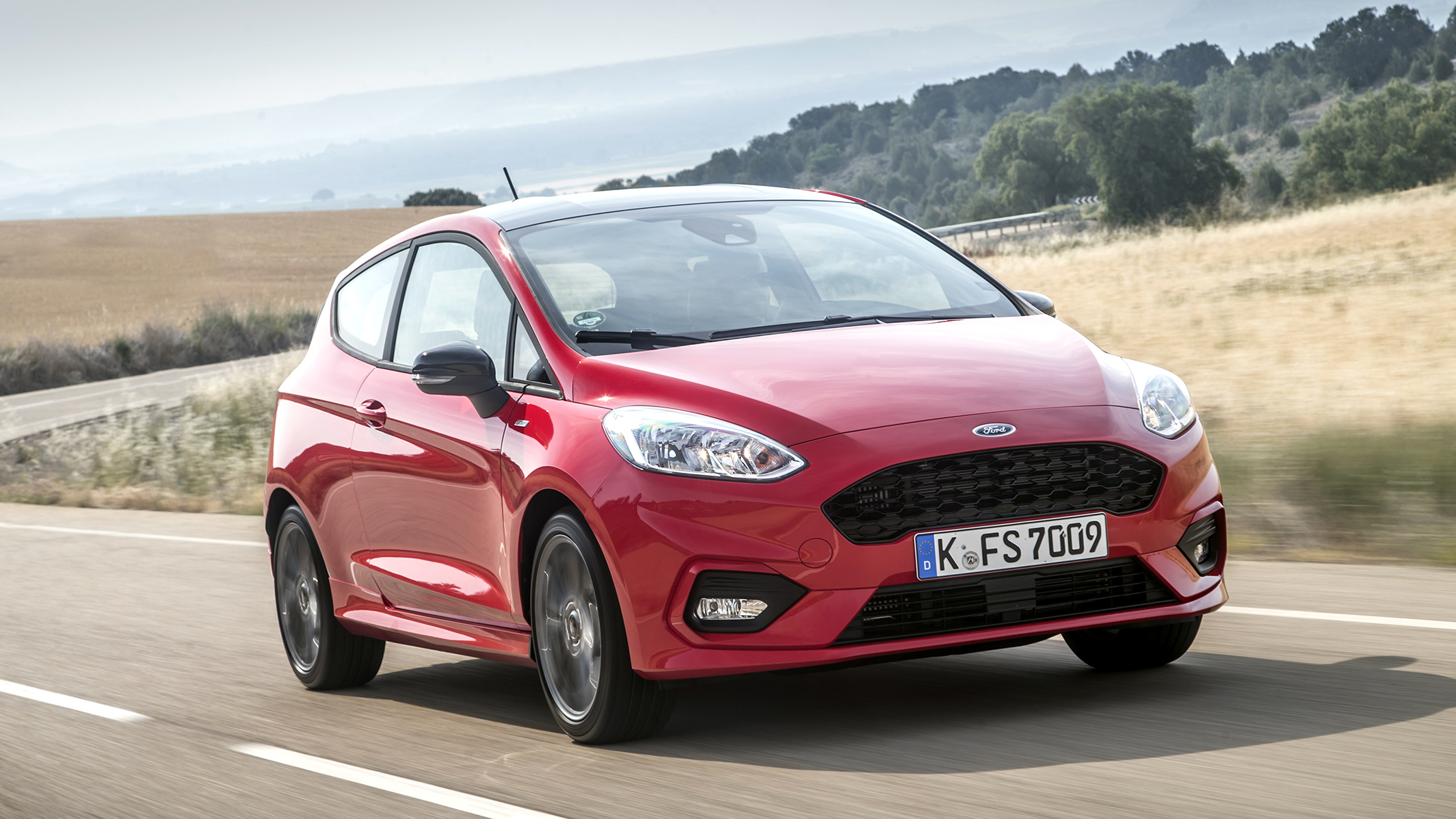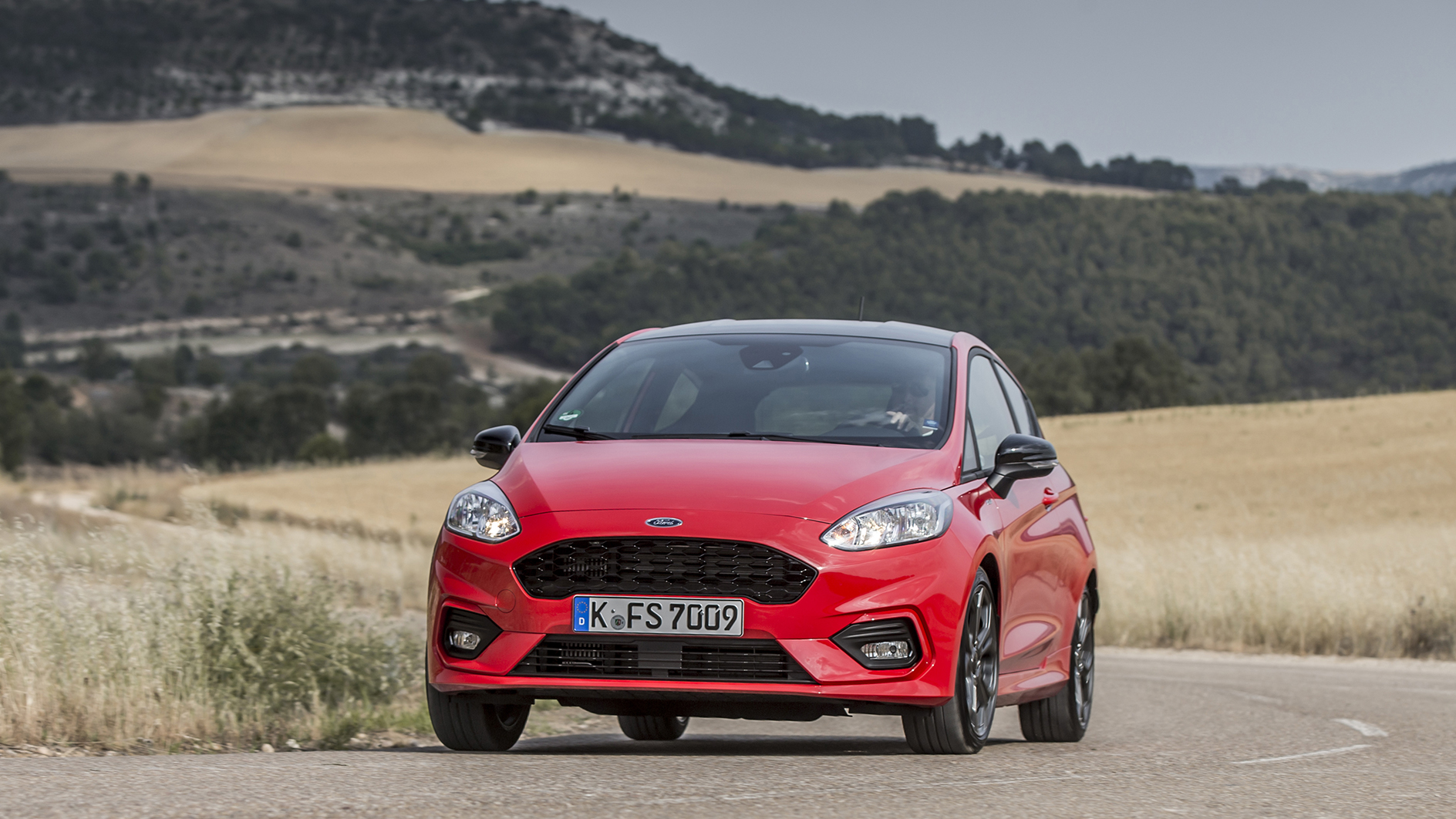
Ford Fiesta Ecoboost Hybrid review: the best small car money can buy
£22,455 when new
SPEC HIGHLIGHTS
- BHP
125bhp
- 0-62
9.4s
- Max Speed
124Mph
How much of a hybrid is the new Ford Fiesta Hybrid then?
Not much. You can’t plug it into the wall, or silently waft about solely on electric power. No, this is a mild hybrid. Nothing scary here.
Basically, it’s the latest 1.0-litre turbo engines from the Puma crossover, living life a little lower down in Ford’s phenomenally popular supermini.
They’ve been boosted by a 48-volt belt-driven starter-generator motor that’s juiced by a wee lithium-ion battery pack. So teeny in fact, it doesn’t eat into the Fiesta’s boot space or steal any legroom. Even the fuel tank’s the same size as a non-hybrid Fiesta. Clever packaging, that.
Obviously, the flipside is you’re not getting much in the way of electrical boost. Ford says the 14lb ft motor chips in to cover off turbo lag when you can’t be bothered to change down a gear. The engine itself has sprouted a larger turbo and a lower compression ratio, because of the e-assistance when starting off.
Hardly a Porsche 918 Spyder, is it?
Nope. This isn’t what you’d call ‘a numbers car’.
There are two flavours of power output: the chicken korma 123bhp model, and a slightly warmer chicken korma 154bhp version. And instead of the usual oh-yeah-right million-miles-per-gallon claims, Ford says that at best, this zap of electroboost might give you a five per cent economy improvement.
Sure, there’s also cylinder deactivation to let the car run on two cylinders when cruising, but big whoop. The 197bhp Fiesta ST offers that. Has done for years.
Go on then, how economical is it?
Top Gear
Newsletter
Thank you for subscribing to our newsletter. Look out for your regular round-up of news, reviews and offers in your inbox.
Get all the latest news, reviews and exclusives, direct to your inbox.
We buzzed around in a Fiesta ST-line X fitted with the lesser 123bhp engine for 200 mixed-discipline miles and averaged 46mpg. So you see, Ford’s forecast was right. The hybrid boost gives you a little bit back, but doesn’t turn the Fiesta into a complete tee-totaller. We were way off the 57.6mpg official claim. It was the fault of the handling, honest.
For some real-world context, my other half owns an old-shape Fiesta fitted with the lowly 74bhp tri-cylinder engine. It tends to mooch about town, praying we won’t ever point it at a motorway, a hill, or a particularly steep speed bump. It never fails to do less than 43 miles per gallon.
What Ford’s done here is implement conscience-easing peace of mind to the Fiesta. You don’t even have to try to drive it carefully, and it’ll quietly sip a bit less petrol. Meanwhile, you can get on with enjoying life. Starting with charging around some corners.
The extra weight hasn’t blunted the handling then?
Nope, this is still the cheekiest small car money can buy. It’s fantastic. And besides, the EcoBoost Hybrid only weighs around 30kg more than the outgoing, non-hybrid version. You’ll never notice.
What you will spot is the re-gen effect when you lift off the throttle. To harvest energy for the battery, Ford’s installed a regenerative braking system that gets to work the second you ease up on the gas. There’s even a little graphic on the dashboard to explain where the power is being sent – battery-wards when you coast, or to the wheels as you accelerate.
The slow-down effect is fairly pronounced if you’re upgrading from an old Fiesta. For the first week, you’ll find yourself at a walking pace half a mile before the roundabout you intended to freewheel up to. Brake pedal feel itself is fine, though.
So are all the controls. The gearshift is lovely – just as well, because Fiesta Hybrids are manual only – the steering has a lovely oily slickness to it, and the whole car has a sense of poise that makes it feel like a much more expensive, well-honed product. If McLaren or Porsche came over all urban chic and decided to build a VW Polo rival, it’d handle like this.
Anything else?
Thanks to the heftier electrical architecture, the new Fiesta is also keener to cut the engine at a red light.
There’s actually a sub-menu to choose when you want this to occur if that’s unnerving for you (good idea, Ford), but learn to trust the computer and it’ll quietly kill the thrummy engine as soon as you drop below 15mph. Start-up is ultra-smooth and instantaneous.
But this isn’t the only small hybrid town car vying for my cash, is it?
Lord, no. There’s now something called the Renault Clio E-Tech, which claims to use F1 technology to make trips to the shops cheaper.
It’s massively more complicated that the Fiesta. It'll run at up to 40mph on e-power alone, and prices cannily start a few hundred quid cheaper overall than the Fiesta. It’s more cramped in the back and not as nice to drive, though.
Then there’s the latest, rather good evolution of Toyota’s hybrid-only Yaris, which finally looks as clever as it is underneath. Driven with care and attention, some of the more advanced hybrid superminis will be more frugal than the Fiesta, no doubt.
The Fiesta is a simpler brew. It asks pretty much nothing of you, it’s stunningly good to drive, practical at everything else and now goes a little further on a tank. This one is not the gateway drug into electrified motoring you might expect, but it is the best everyday supermini on the planet.
9/10
£22,285 (ST-line X 5dr)
1.0-litre 3cyl turbo plus e-motor
123bhp, 155lb ft
0-62mph in 9.4sec, 126mph
57.6mpg, 109g/km CO2
1217kg
Featured







